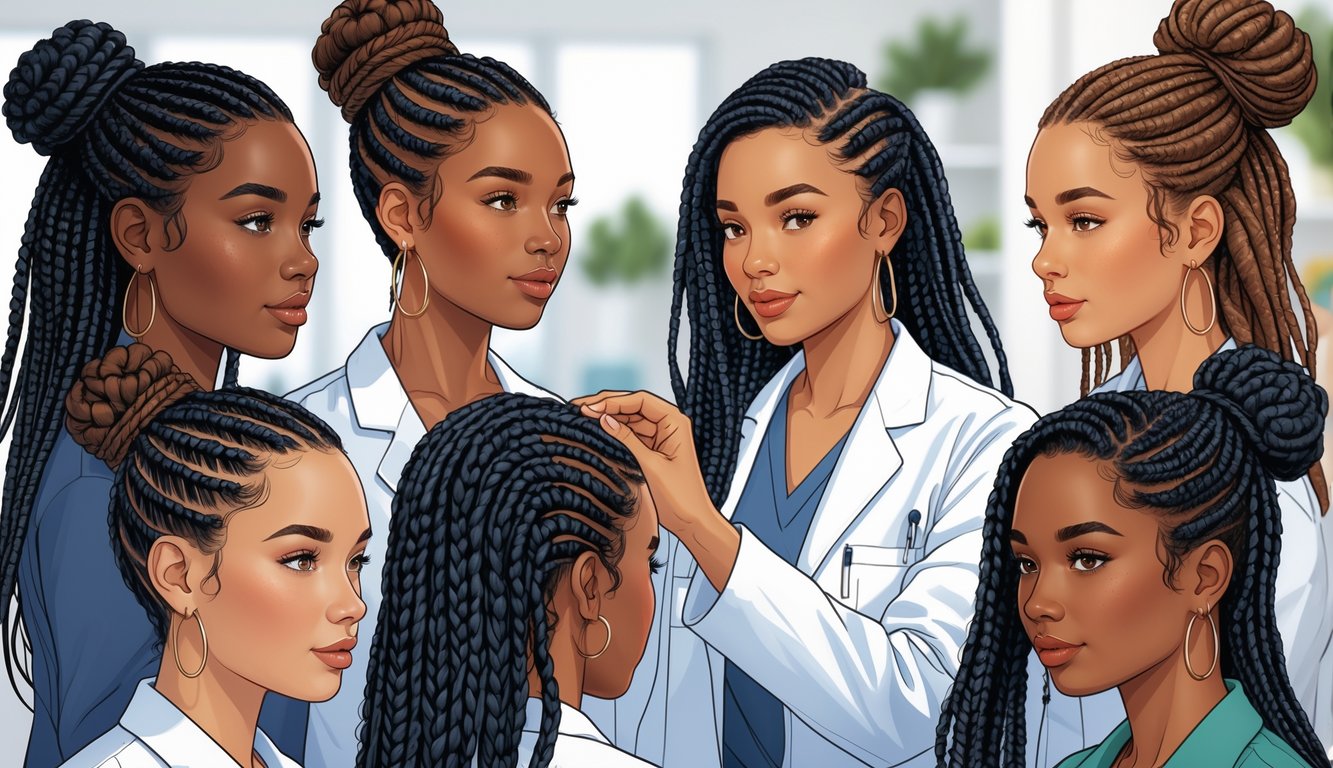
Why am I still getting panicked DMs about tight braids, like, every month? Didn’t every stylist and dermatologist already yell, “Let your scalp breathe!”? “Protective” should mean your scalp’s chill, not on fire, but here we are. I’ve lost track of people telling me their micro-braids are “healthy,” while a trichologist I talked to last week just sighed and said, “Low-tension, bigger sections, roots never yanked—those are the rules if you value your edges.” She rattled off stats about traction alopecia jumping fifty percent. And yet, jumbo twists or loose box braids—the actual dermatologist favorites—are somehow the last thing anyone picks in salons blasting Afrobeats. Why? I have no idea. Maybe people just like pain.
It’s like everyone’s gone feral for “grow your hair faster” hacks and TikTok “experts” pushing six-hour knotless sessions, but nobody’s reading the fine print about tight braids causing permanent hair loss. It drives me nuts. My cousin’s friend claims her super tight weaves help her hair “rest,” but her hairline is basically a ghost at this point. Meanwhile, dermatologists keep saying loose, low-tension protective styles are the way to go. Sure, but try convincing your auntie at the salon that her scalp shouldn’t tingle or burn. Sometimes I zone out and think about pizza mid-conversation. It’s easier.
Why do people think more tension equals more protection? Like, does yanking your hair make it stronger? Nope. Tight braids just load on weight and breakage. So if you actually care about your hair follicles (and who doesn’t miss their baby hairs?), the expert move is looser braids, never smaller than a pencil, and don’t leave them in forever. It almost feels too easy. TikTok hypes whatever’s trending, but dermatologists stick with big, gentle braids for one reason: edges are everything. Aesthetics? Meh, they’re temporary.
Defining Protective Styles and Their Importance
It’s wild how much one dumb salon trip can mess things up. I blamed my shampoo for breakage, but it was all tension. Not every faux loc, cornrow, or silk-lined wrap is actually helping your hair, despite what the packaging says.
Benefits of Protective Hairstyles
Sometimes I treat braiding like insurance, except if you forget leave-in, your “coverage” is gone. Less daily manipulation is supposed to mean less breakage, but honestly, loose hair still tangles like it’s out for revenge. Experts say, “Ends are the oldest, weakest part of the hair,” which…yeah, that checks out.
Protective styles can help with split ends and reduce friction, especially if you’re not frying your hair with heat tools. Tried tight weaves after some influencer’s “growth tips”—ended up with tension bumps that wouldn’t budge for weeks. Clinical reviews back it up: low-tension styles like jumbo twists and box braids mean fewer frantic emails to your derm when your edges start ghosting. But, and here’s the kicker, “protective” products aren’t regulated. You have to trust actual risk studies about hair loss and scalp trauma over whatever the bottle claims.
Different Types of Protective Styles
Last Thursday I stared at a chart of braiding patterns and just scribbled random notes, mostly annoyed because I’d grabbed the wrong hair type again (synthetic, ugh). Cornrows have been around forever—pre-colonial times to Y2K runway, honestly who’s keeping score? My scalp definitely prefers modern cushion caps, though.
Single braids? They leave ends too exposed for me, but some people swear by updos or wigs (as long as the cap breathes, not that I always remember). Dermatologists keep pointing out micro-braids and tight extensions are basically traction alopecia traps. So, probably stick to jumbo twists, crochet braids, or that easy scarf thing I saw on YouTube and immediately forgot how to do. The weirdest part? People act like “protective” means zero risk. Every derm I’ve met says otherwise, but the myth lives on.
Why Not All Protective Styles Are Equal
That myth about “any protective style works” just refuses to die. My hairline is living proof it’s a lie. Some “protective” styles just backfire. I mean, I’ve seen crochet braids done so loose they look messier on day one than on week four, but at least the scalp’s not screaming. Materials, technique, tension—skip one and you’re in trouble. Ignore the warning signs (itching, flaking, those tiny bumps) and you’re basically asking for scalp drama.
Factors That Influence Hair Protection
Every stylist has their own gospel, but not all hair or styles can handle the same stuff. I tried feed-in cornrows with extensions way too heavy for my hair—snap, gone. Nobody told me. Weight, synthetic vs. real hair, how much moisture you can actually get in, if you can even reach your scalp—these things matter. Even a silk scarf (yes, the granny kind) can make a difference.
Derms say lightweight, low-tension styles—big, loose twists, soft crochet braids—leave hair follicles less traumatized. Curlkalon’s got a breakdown on why lightweight crochet is a big deal. And yeah, not messing with your hair for a few days actually helps. But nobody warns you that under a style, frizz can tangle like wild. Edges need oil blends, tension checks, and sometimes the best move is just leaving things alone. But we all want new looks, so, oops.
Risks Associated With Certain Methods
People think more is better—like, tinier braids must mean more “protection.” Nope. Derms literally warn that traction alopecia risk goes up when tension is high or you keep stressing the same spots. I learned the hard way: one too-tight install and suddenly I’m googling “how to regrow edges.” Not fun.
It’s not just itchiness. Weaves, micro braids, too-tight extensions can cause bumps or even scabbing. Tight braids and weaves can straight-up trigger traction alopecia, sometimes for good. Derm in Atlanta once told me, “If the style hurts, it’s not protective, it’s destructive,” while she was literally massaging someone’s sore scalp. So, yeah, super-low-tension braids, loose twists, and actual breathable wig caps are non-negotiable. Don’t trust the Instagram hype. And can we talk about the breakage from never letting your hair see water for months? Disaster.



